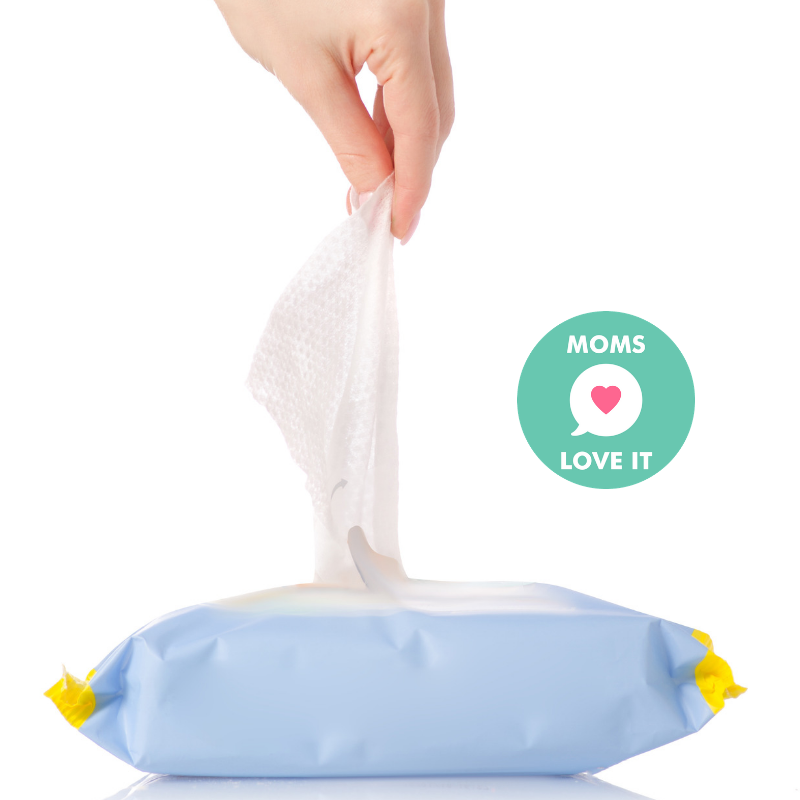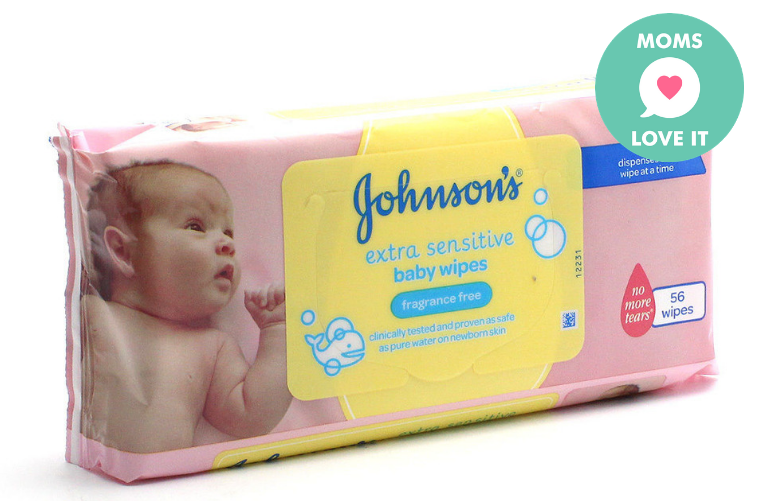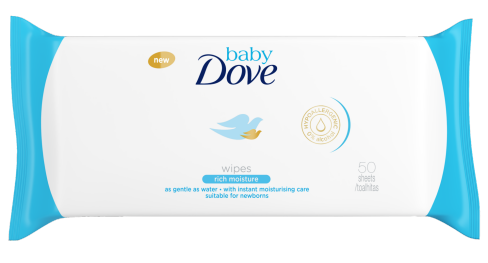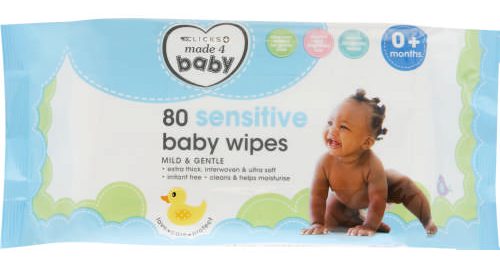Looking for recommendations on wet wipes? The Momsays tribe is here to help.
We asked moms across South Africa to share their favourite brands and wet wipes.
Questions to ask yourself when deciding on which wet wipes to buy:
- What’s my budget?
- Are ingredients important to me?
- Does my baby or toddler have a sensitive skin?
- Do I want something eco-friendly?
- Do I prefer scented or unscented wipes?
Once you have those answers, it will make it a lot easier to decide which brands you want to look at first since there are so many options available.
Tip:
Try and purchase in bulk when there’s a sale happening at the baby expos or at your local store. I prefer purchasing at stores that have a rewards card because of the points I earn while shopping which I can, later on, redeem to purchase something else (save it for those months when you are feeling the pinch).
These brands have a few different wipes in the range, I will just be sharing the most popular ones based on the feedback we received thus far.
10 Best Baby Wipes to try:
in no particular order
1. Johnson’s Baby
Johnson’s is a trusted brand worldwide. The reason why many moms love using Johnson’s Baby wipes is that you get a quality product at a good price.
JOHNSON’S Baby Gentle All Over Baby wipes are multi-purpose, do-it-all wipe to effectively cleanse everything from wet bottoms to dirty hands and delicate faces. Formulated to minimise the risk of allergy with their no more tears formula and moisturising lotion with 97% pure water, so it can be used even around the eyes.
JOHNSON’S Baby Extra Sensitive Baby wipes have been independently proven as safe and gentle as water alone through one of the largest clinical trials for baby wipes.
Perfect to use all over your newborn baby’s skin.
Both wipes are hypoallergenic, alcohol and soap free with the new improved dispensing so that only 1 wipe at a time is used.
2. Huggies
If you shop at the baby expo, 99% of the time you will receive a free pack of wipes with your bulk diaper purchase. The Huggies Pure wipes are popular because it is suited for newborn delicate skin and babies with sensitive skin.
Huggies Pure wipes are made from a unique material that is thick and soft, to offer pure, gentle cleaning like cotton wool and water.
The wipes are:
- Hypoallergenic
- Alcohol-free
- Dermatologically tested
- Fragrance-free
Huggies Natural Care Wipes are also made from unique cotton-like material to make it thick and soft but have been made with soothing Aloe & Vitamin E to help protect baby’s skin naturally.
3. Pure Beginnings
Pure Beginnings is a South African brand. They have such an amazing range of products available for the entire family.
The wipes are made with 100% biodegradable plant fibre and are infused with a soothing organic aloe extract. The wipes are excellent for delicate and sensitive skin.
- Organic Tea Tree oil is a natural antiseptic and fungicide with wonderful healing properties.
- Organic aloe extract helps with soothing and is anti-bacterial.
4. Cherubs
I absolutely love Cherub’s idea of launching potty training wipes! I think they are one of the few brands who got this product spot on.
The wipes are:
- Moisturising and gentle
- Eco-friendly
- Flushable & biodegradable – Chlorine, alcohol and paraben free
- Ph Balanced
Cherubs Sensitive Fragranced Wipes are designed to gently cleanse and protect even the most sensitive skin. Its super-soft spunlace fabric is infused with Aloe Vera and Vitamin E to nourish and moisturise the skin, while its pH balanced, alcohol-free and paraben-free formulation gently cleanses without drying.
 5. Baby Dove
5. Baby Dove
Baby Dove wipes are great for sensitive skin. They are mild and non-irritating, dermatologist and paediatrician tested. Their hypoallergenic baby wipes aren’t only for baby’s bottom, they’re suitable for use all over your baby’s body, to clean delicate hands and face, too.
The rich in moisture wipes are gentle and created without dyes, parabens or phthalates. It’s perfect for newborns and compatible with eczema prone skin.
6. Bennetts
I love the bum buddy from Bennett’s – it’s a very clever product to have in the nursery.
Bennetts Wet Wipes are clinically tested for mildness – fragrance-free, alcohol-free & pH balanced. They are durable, soft & the moisture is consistent from the first to last wipe.
 7. Pigeon
7. Pigeon
Pigeon’s original wipes remain the best of them all. It protects and retains the overall moisture balance of your baby’s delicate skin.
The wipes are:
- Made from 99% Organic Extracts
- Unscented and alcohol-free
- Extra soft with added thickness
- Made with purified water
- Safe for use on sensitive skins.
- Microbiologically tested ensures a high standard of quality and hygiene.
The Pigeon Anti-Bacterial Wipes disinfects hands, pacifiers, teethers, toys and feeding utensils. The wipes kill 99.99% of Bacteria.
8. Pampers
Pampers Fresh Clean wipes are soft and strong to offer gentle cleaning for your baby’s delicate skin.
Pampers Sensitive Wipes are made with Pampers’ unique Soft Grip Texture, offering gentle cleaning for sensitive skin.
The wipes are:
- Dermatologically tested to be gentle.
- 15% thicker (vs. Pampers Fresh Clean Wipes) and restore the natural pH levels of the skin to protect the sensitive skin of your baby.
- Pampers sensitive wipes are clinically proven mild and are perfume free.
9. Clicks
Clicks wipes are reasonable in pricing compare to many other brands listed here.
Clicks Sensitive Baby Wipes are free from alcohol and fragrance. These interwoven wipes are enriched with Aloe Vera extract to gently cleanse your baby’s delicate skin.
Clicks Toddler Hygiene Wipes are great for cleaning your toddler’s hands and face during weaning, at meal times and during play. The wipes are also ideal to keep handy when out and about, and as a toddler’s first toilet tissue.
10. Lansinoh
Lansinoh is a brand I underestimated for a long time.
The wipes are:
- Soft-spun for softness and extra strength
- Hypoallergenic, alcohol-free and unscented
- Gentle formula for frequent cleansing
- Conditioned skin to prevent dryness and chafing
- Provides protective barrier from wetness between diaper changes


















28 comments
Scrap Copper reuse Copper scrap melting processes Copper scrap waste reduction
Copper scrap trading platform Copper scrap market dynamics Copper scrap environmental stewardship
Copper scrap processing equipment Scrap copper transportation Copper scrap material flow optimization
Scrap aluminum sourcing Aluminium scrap value-added processing Aluminium recycling industry compliance
Metal waste reutilization Ferrous metal scrap reclamation Iron scrap recycling operations
Ferrous material shredding equipment, Iron alloy recycling, Metal scrap industry expertise
Scrap metal reclamation processing Aluminum recycling trends Scrap aluminium operations
Metal waste repurposing innovations, Scrap aluminum cable prices, Metal reclaiming processing
Metal recycling solutions center services Ferrous material market volatility Iron scrap disposal facility
Ferrous material recyclability assessment, Iron waste reclamation and recycling, Scrap metal processing equipment
Metal scrap weighing Scrap aluminium resource utilization Aluminum production scrap
Industrial metal recovery, Aluminum cable scrap collection points, Metal waste reforming
Metal scrap recuperation Aluminium recycling technologies Aluminium scrap processing technologies
Metal disassembling, Aluminum cable disposal, Metal waste branding
Metal recycling procurement Ferrous material outreach programs Iron waste reprocessing operations
Ferrous material operations, Iron scrap management, Metal scrap recycling solutions
Environmentally friendly scrap metal trading Ferrous material carbon footprint reduction Iron scraps reprocessing
Ferrous material corporate social responsibility, Iron recovery process, Metal waste melting
Scrap metal end-of-life management Scrap aluminum industries Aluminium recycling market expansion
Metal recycling and disposal, Scrap aluminum cable value, Air quality control in metal recycling
Metal recycling recovery yard Ferrous material recycling planning Iron scrap processing yard
Ferrous material recycling news, Iron scrap recovery and reclamation, Metal waste recovery center
Metal reclaiming center services Aluminium recycling infrastructures Scrap aluminium granulation
Scrap metal recovery center, Scrap aluminum cable pricing, Metal recycling procurement
Metal scrap recovery depot Ferrous metal collaborations Iron recycling and reclaiming center
Ferrous material digitalization, Iron scrap reclaiming facility, Scrap metal reclaiming management
Scrap metal compaction Aluminium recycling industry updates Scrap aluminium innovation
Metal waste separation, Reusing aluminum cable scrap, Metal waste reforming
Advanced metal recycling Aluminium scrap primary processing Scrap aluminium technological advancements
Metal scraps, Aluminum cable scrap weight, Metal reutilization yard
Scrap metal dealer Ferrous material baling Iron scrap recycling best practices
Ferrous material accreditation, Iron scrap reclamation, Metal waste repurposing and recycling
Scrap metal yard Scrap aluminium material recovery Aluminium scrap customs clearance
Scrap metal industry regulations, Aluminum cable scrap trade, Sustainable metal processing
Scrap metal end markets Ferrous material repurposing services Iron scrap trade regulations
Ferrous material recycling workshops, Iron reclamation facility, Scrap metal processing yard
Copper scrap machining Copper scrap future outlook Renewable copper resources
Scrap metal export, Copper scrap compounding, Metal scrap recovery services
Copper recycling process Copper is one of the oldest known metals, dating back to ancient civilizations such as the Egyptian, Greek, and Roman empires. The use of copper began around 8000 BC in the Middle East, where it was first mined and then hammered into various shapes for use as tools and weapons. As ancient cultures advanced, copper became increasingly important in the development of new technologies. Copper was used to make water pipes, which helped societies to flourish by providing clean water for drinking, cooking, and sanitation. The use of copper also revolutionized the field of metallurgy, paving the way for the development of stronger metals such as bronze, an alloy of copper and tin. Copper has been used in many other applications throughout history, including currency, electrical wiring and electronics, and decorative objects. The versatile metal was chosen for currency due to its uniformity, durability, and relative ease of minting. Today, copper is still used in many applications due to its excellent electrical and thermal conductivity, corrosion resistance, and malleability. Copper alloys, which are mixtures of copper with other metals, have been developed over time to improve the properties of copper for specific applications. For example, brass, an alloy of copper and zinc, has excellent machinability and is used for hardware and decorative applications. Bronze, an alloy of copper and tin, is stronger and more durable than copper alone, and is used for applications such as sculpture and musical instruments. The history of copper and copper alloys reflects the ingenuity and resourcefulness of human beings throughout history. From the earliest civilizations to the modern era, copper has played a vital role in technological progress and cultural development Scrap metal reclamation and repurposing Copper scrap market forecasting Copper scrap refining Scrap copper alloys Copper scrap carbon footprint Metal waste repackaging
Copper scrap compaction Copper is used for most electrical wiring for several reasons. First and foremost, copper is an excellent conductor of electricity. This means that electrons can flow freely through copper, making it an efficient material for electrical wiring. Additionally, copper is very ductile, which means it can be easily bent and shaped without breaking. This makes it a versatile material that can be used in a wide variety of electrical applications. Copper is also very durable and long-lasting. It is resistant to corrosion, which means it can withstand exposure to moisture and other environmental factors without deteriorating over time. Copper wiring can also withstand high temperatures, making it suitable for use in high-heat environments such as industrial machinery or electric motors. Another advantage of copper wiring is that it is very easy to work with. It can be easily soldered or brazed, and it can also be crimped or twisted together to form connections. Copper wiring is also very easy to terminate, which means that it can be connected to other components or devices easily and securely. Finally, copper wiring is also very cost-effective. While initial costs may be higher than other materials, the long-term benefits of copper wiring make it a more economical choice over time. Its durability and low maintenance costs mean that it can last for many years without needing to be replaced or repaired. Overall, the combination of copper’s excellent conductivity, ductility, durability, ease of use, and cost-effectiveness make it the ideal choice for most electrical wiring applications Metal waste reprocessing Copper bearing scrap Copper recycling best practices Copper scrap public awareness Copper scrap economic trends Robotics in metal recycling
Copper scrap purification processes Copper scrap collection procedures Metal scrap breakup
Copper cable scrap yards, Metal scrap recycling and reclamation, Copper scrap environmental compliance
Scrap collection network, Industrial copper waste, Copper cable scrap export permit, Scrap metal transportation
Metal waste inventory Metal recycling solutions center services Iron scrap compacting
Ferrous metal compaction, Iron salvage operations, Scrap metal recovery and trading
Metal reuse and reclamation Ferrous material teamwork Iron waste recycling and salvage
Ferrous material recycling processes, Iron disposal, Metal waste recovery solutions
Metal market analysis services Ferrous material record-keeping Iron waste sorting
Ferrous metal salvage yard, Iron and steel waste management, Environmental metal stewardship
Scrap metal transaction transparency Ferrous material recycling yard Iron and steel reclaiming
Ferrous material recycling profitability, Iron processing, Scrap metal reclamation operations